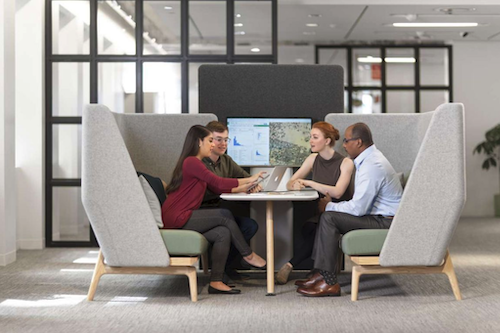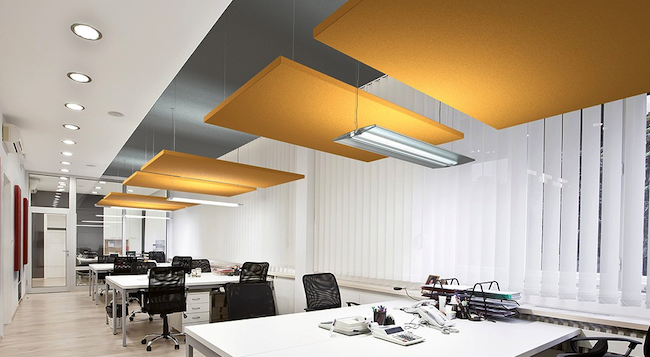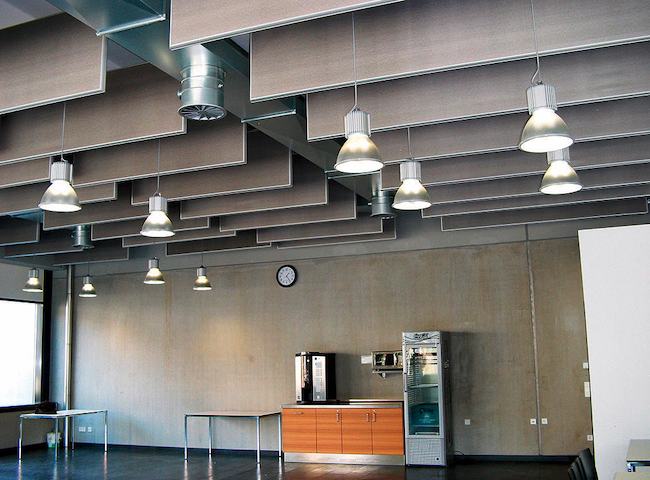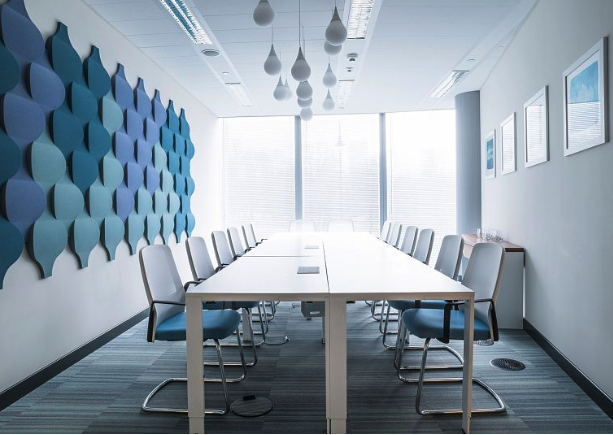5 Ways to Reduce Office Noise for Your Workplace


Many employers mistakenly believe they need extravagant workplace amenities to attract top talent. But what employees want most of all isn’t a beer garden or a giant wall of candy—it’s a quiet place to work.
Office noise is the No. 2 biggest productivity killer, second only to chatty coworkers, according to Udemy’s 2018 Workplace Distraction Report.
Not only does office noise affect productivity; it also impacts the overall employee experience. In an extensive report, the U.S. General Services Administration discusses the importance of “acoustical comfort,” which is when the office provides “appropriate acoustical support for interaction, confidentiality and concentrative work.”
5 Ways to Minimize Office Noise That Actually Work
1. Choose The Right Workplace Design
Before you add any new elements to the workplace, make sure the layout itself supports your goal. In other words, avoid an entirely open concept office. An open office plan may encourage flexibility and collaboration, but its inherent lack of office noise control can hurt productivity. Instead of an open office floor plan, consider an activity-based working (ABW) environment.
In an ABW environment, there are designated areas for meetings and brainstorming sessions, as well as places for quieter activities like deep work. There might be phone booths where employees can privately take calls without disturbing their colleagues. You can also take your office noise control efforts a step further by placing high-traffic spaces such as break rooms, kitchens and conference rooms away from workstations.
2. Choose the Right Office Furniture
Modern office design tends to lean more towards minimalism, with bare floors and exposed ceilings. And while this does create a clean look, it also means there’s nothing to absorb sound.
Fortunately, the growing popularity of more open, flexible work environments has led to an increase in the availability of sound-absorbing office furniture. Also known as acoustic furniture, these pieces are constructed with specific dimensions and fabrics designed to reduce office noise.
Acoustic furniture can be used to create a small collaboration area where employees can have an impromptu meeting, like this example:

3. Mount Sound-Absorbing Fixtures
Along with using acoustic furniture, you can install acoustic ceiling clouds or baffles. Clouds are suspended horizontally from the ceiling and ideal for workplaces with limited wall space. They not only reduce office noise levels but also control sound reverberation.
 (Source: Akustik Mimarlık)
(Source: Akustik Mimarlık)
Baffles hang vertically from the ceiling and work best in offices with high ceilings. Because all sides of a baffle are exposed, there is a larger surface area and greater capacity to absorb sound.

If your workplace is on the smaller side or has lower ceilings, acoustic wall panels are a good alternative to clouds and baffles. In addition to reducing office noise, wall panels can add a nice pop of color, too.
 (Source: Fluffo)
(Source: Fluffo)
4. Install Flooring That Minimizes Office Noise
Covering up concrete floors with carpet is one of the quickest ways to noticeably minimize office noise. There are plenty of office design firms who can help you find carpeting that suits your needs from both a maintenance and aesthetic standpoint. But you aren’t restricted to either concrete or carpet.
One alternative is luxury vinyl tile (LVT), which has grown in popularity over the past decade. LVT is available in a wide variety of designs that not only look similar to natural stone or hardwood but also have multiple advantages over both. It costs considerably less to install, clean and maintain. It’s also more durable than hardwood or stone and lasts longer. And, most importantly, it absorbs sound more effectively than other hard surface flooring options.
5. Add Ambient Office Noise
In a meta-analysis of 242 previous studies on how noise affects performance, researchers discovered that intermittent speech had a greater impact on an individual’s ability to perform cognitive tasks (for example, working with numbers and reading and understanding text) compared to continuous speech or ambient noise. The issue is that intermittent speech has a greater variance in volume and rhythm, which means our brains have more difficulty tuning it out.
So while the previous strategies involve minimizing office noise by reducing it, the final method minimizes office noise by increasing it with a sound masking system. A sound masking system adds consistent, low-level ambient noise to the workplace and makes it harder to hear side conversations that can be distracting.
How does your company minimize office noise? Share your strategies with us on Facebook and Twitter!

